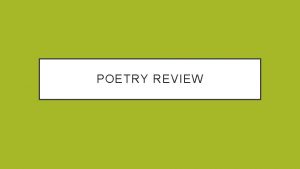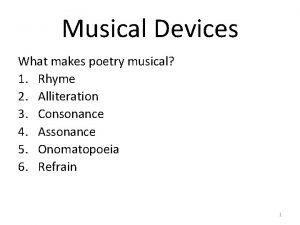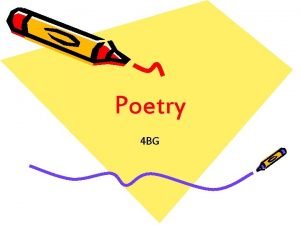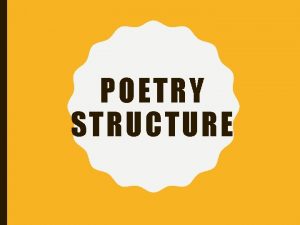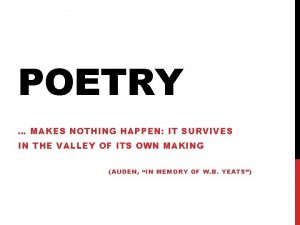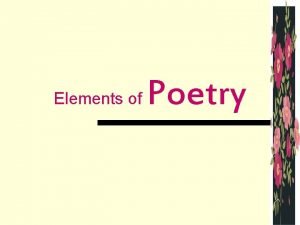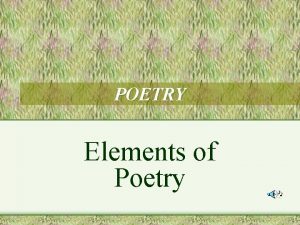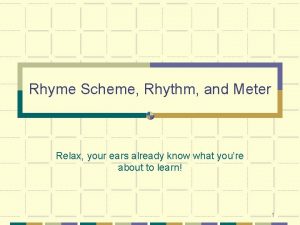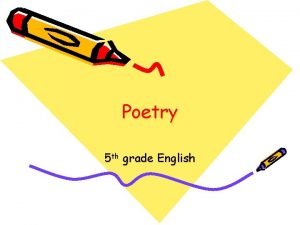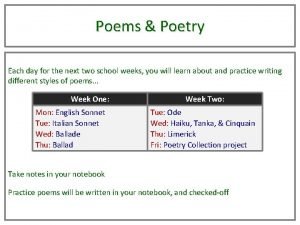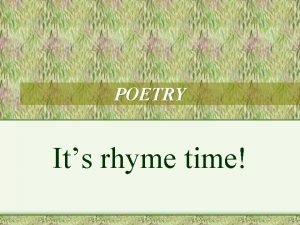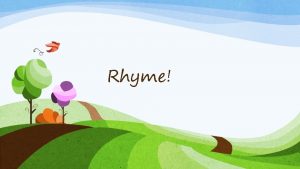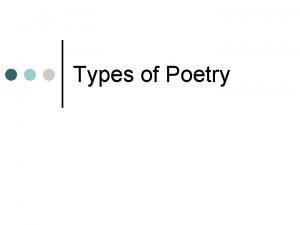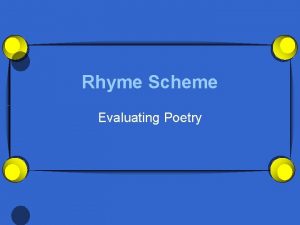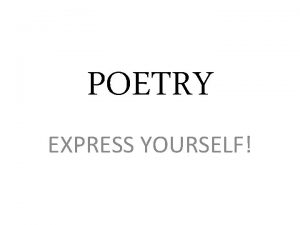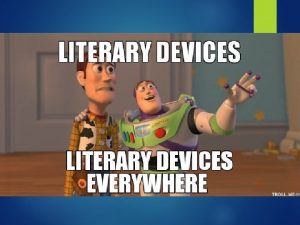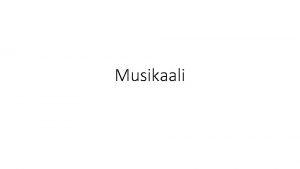Musical Devices What makes poetry musical 1 Rhyme












- Slides: 12

Musical Devices What makes poetry musical? 1. Rhyme 2. Alliteration 3. Consonance 4. Assonance 5. Onomatopoeia 6. Refrain 1

What is Rhyme? • The Repetition of accented vowel sounds and all succeeding sounds that appear close together • Example: Come with the rain, O loud Southwester! Bring the singer, bring the nester; Give the buried flower a dream; Make the settled snow bank steam -From To the Thawing Wind By Robert Frost 2

3 Types of Rhyme 1. 2. 3. End Rhyme Internal Rhyme Approximate Rhyme (also called slant) 3

End Rhyme • The most common form of rhyme • Places the rhyming sound at the end of a line of poetry • The following lines of poetry by Langston Hughes are a good example: O, God of dust and rainbows, help us see That without dust the rainbow would not be 4

Internal Rhyme • Repeats sounds within lines of poetry • The following line from Edgar Allan Poe’s The Raven is a good example: Once upon a midnight dreary, while I pondered weak and weary 5

Approximate Rhyme • Very popular with more modern poets • The final rhyming sounds are close, but not exactly the same • Approximate rhyme is illustrated in these lines by Emily Dickinson All of evening softly lit As an astral hall “Father, ” I observed to Heaven, “You are punctual!” 6

What is Alliteration? • The repetition of consonant sounds in a group of words close together • Alliteration comes at the beginning of words • An easy way to remember alliteration: Alliteration uses all the letters, except the vowels. 7

An Example of Alliteration This example comes from Ted Hughes’s poem, The Lake: Snuffles at my feet for what I might drop or kick up Sucks and slobbers the stones, snorts through its lips 8

What is Consonance? • It is the repetition of consonant sounds located other than at the beginnings of words. • Again, The Lake offers a good example: Snuffles at my feet for what I might drop or kick up Sucks and slobbers the stones, snorts through its lips 9

What is Assonance? • The repetition of vowel sounds close together • How are rhyme and assonance different? • Rhyme is the repetition of accented vowel sounds AND the sounds that follow them • Assonance is simply the repetition of vowel sounds • Edgar Allan Poe’s The Bells provides a good example: From the molten golden notes 10

What is Onomatopoeia? • The use of a word whose sound imitates or reinforces its meaning. In other words, it seeks to imitate the sound for which it stands. • Examples in everyday language are words like whoosh, tick-tock, zoom, and purr. • Popcorn is also onomatopoeia because its name imitates its action. 11

What is Refrain? • One or more words, phrases, or lines that are repeated regularly in a poem, usually at the end of a stanza. • In a song, we often call it the chorus. 12
 Sound devices in a poem
Sound devices in a poem What are musical devices in poetry
What are musical devices in poetry Rythm scheme
Rythm scheme What makes poetry different than prose?
What makes poetry different than prose? How to make a limerick
How to make a limerick Tipp-ex sonate
Tipp-ex sonate Root cellar by theodore roethke
Root cellar by theodore roethke Esau wood poem
Esau wood poem Ode poetry definition
Ode poetry definition Rhyme scheme examples
Rhyme scheme examples English poem for class 5
English poem for class 5 Poetry rhyme schemes
Poetry rhyme schemes How to write an ode template
How to write an ode template
